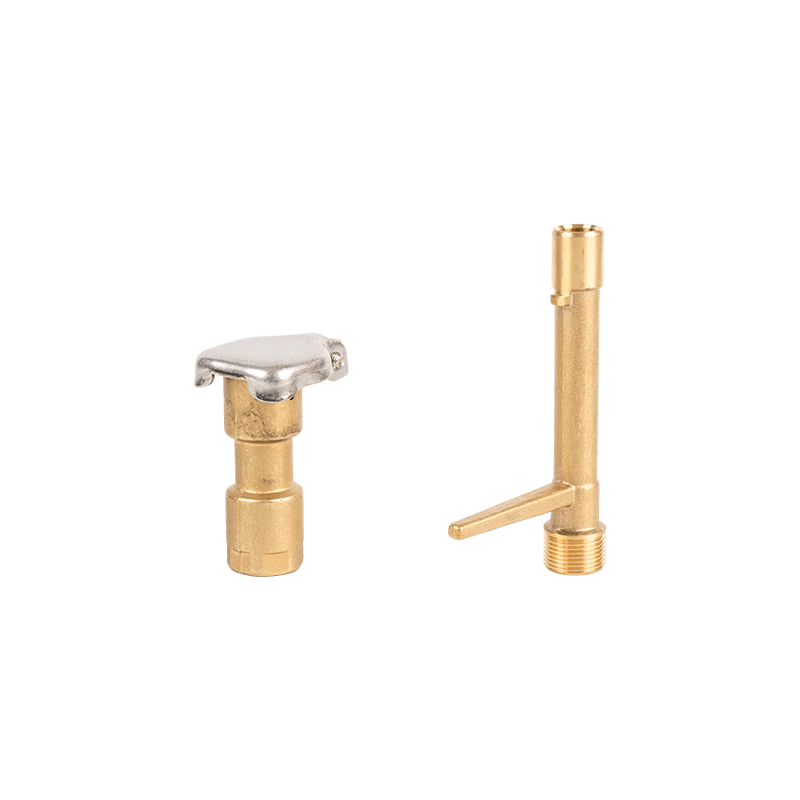 By Admin
By Admin Solving common problems with irrigation quick coupling valves requires a systematic approach. Here's how you can address issues like leakage or valve jamming:
Inspect the Valve: Undertake a comprehensive visual inspection of the irrigation quick coupling valve and its surrounding environment, leveraging your keen observational skills to detect potential sources of dysfunction. Employ specialized inspection tools such as borescopes, endoscopes, or thermal imaging cameras to access confined spaces or identify hidden defects. Scrutinize critical components such as the valve body, stem, seat, and actuator mechanism for signs of wear, corrosion, mechanical damage, or manufacturing defects.
Check Connections: Conduct a meticulous examination of all interconnections and mating surfaces associated with the irrigation quick coupling valve assembly, adhering to established industry standards and practices. Employ precision measurement tools such as dial indicators, micrometers, or laser alignment devices to assess alignment accuracy and dimensional tolerances. Utilize non-destructive testing techniques such as ultrasonic inspection or magnetic particle testing to detect flaws or discontinuities in welded joints or threaded connections.
Clean the Valve: Execute a rigorous cleaning regimen tailored to the specific requirements of the irrigation quick coupling valve, incorporating proven methodologies and specialized cleaning agents. Employ solvent cleaning techniques, ultrasonic baths, or vapor degreasers to remove contaminants such as dirt, grease, scale, or corrosion products. Utilize mechanical cleaning methods such as wire brushing, abrasive blasting, or high-pressure water jetting to dislodge tenacious deposits or fouling from internal valve surfaces.
Replace Seals: Implement a systematic approach to seal replacement, commencing with a detailed assessment of seal condition and performance characteristics. Utilize advanced analytical tools such as Fourier transform infrared spectroscopy (FTIR) or differential scanning calorimetry (DSC) to evaluate material properties and aging effects. Employ precision molding or CNC machining techniques to fabricate custom seals with precise dimensional tolerances and material compatibility tailored to the operating environment and fluid media.
Adjust Pressure: Employ sophisticated pressure measurement instrumentation such as piezoelectric transducers, strain gauges, or capacitance sensors to monitor system pressure dynamics with unparalleled accuracy and resolution. Utilize advanced control algorithms and feedback mechanisms to implement closed-loop pressure regulation strategies, incorporating proportional-integral-derivative (PID) controllers or adaptive control algorithms. Employ computational fluid dynamics (CFD) simulations or finite element analysis (FEA) to model fluid flow dynamics and optimize pressure distribution within the irrigation network.
Lubricate Moving Parts: Implement a comprehensive lubrication program utilizing lubricants formulated for exceeding operating conditions and environmental factors. Employ advanced tribological analysis techniques such as surface profilometry or atomic force microscopy (AFM) to characterize surface roughness and frictional properties. Utilize automated lubrication systems or precision dispensing equipment to ensure uniform application of lubricants to critical wear surfaces, minimizing friction, wear, and component degradation over time.
Inspect Valve Diaphragm: Execute a detailed inspection of the valve diaphragm assembly, employing advanced microscopy techniques such as scanning electron microscopy (SEM) or transmission electron microscopy (TEM) to visualize microstructural features and defects. Conduct material property testing using techniques such as tensile testing, hardness testing, or dynamic mechanical analysis (DMA) to assess mechanical integrity and resilience. Utilize non-destructive evaluation methods such as acoustic emission testing or eddy current inspection to detect hidden defects or material anomalies.
YR9106 BSP 3/4" brass quick coupling valve, stainless steel cap
